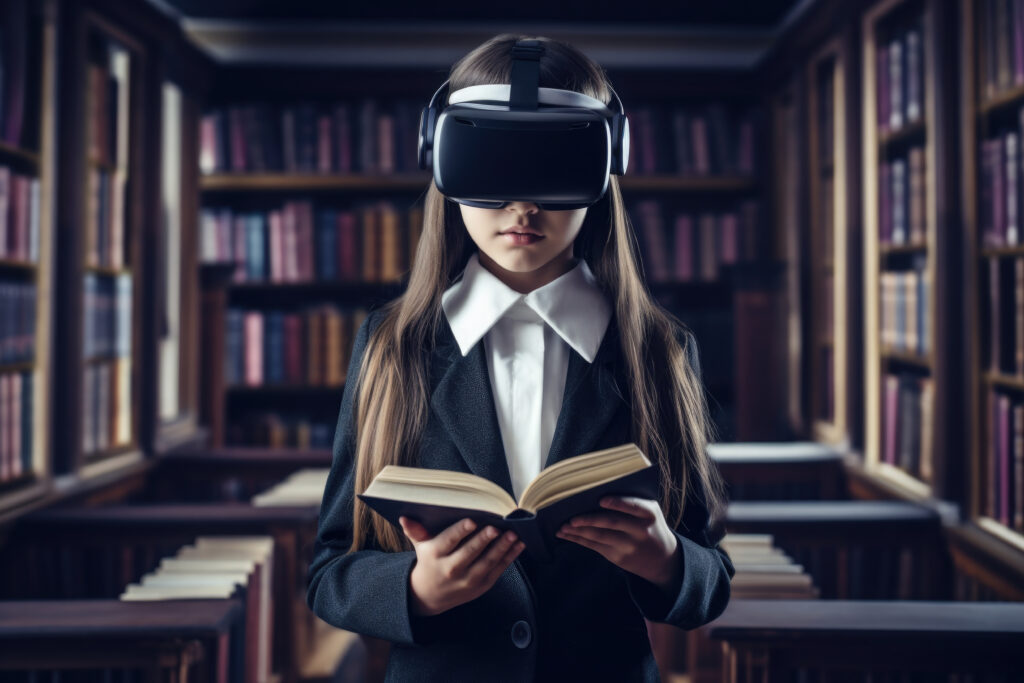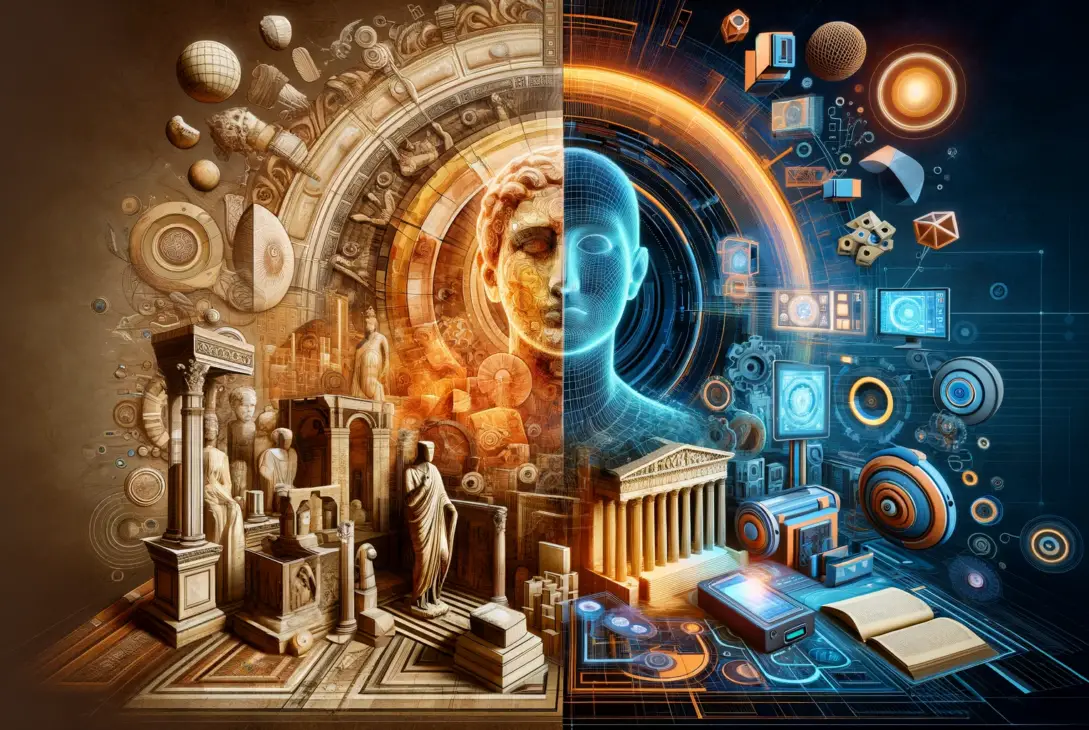In the rapidly evolving world of technology, the preservation of cultural heritage has found a formidable ally. The erosion of historical sites and artifacts, once an inexorable consequence of time and human activity, is now being combated with innovative tech solutions. This article delves into the pioneering realms of 3D scanning, digital archiving, and virtual reality (VR), exploring how they are revolutionizing the preservation of endangered cultural artifacts and historical sites. Our focus lies in unraveling the mechanics of these technologies and understanding their indispensable role in safeguarding our cultural legacy.
The Rising Tide of Technological Intervention
3D Scanning: Capturing History in High Resolution
The application of 3D scanning in cultural heritage preservation is a tale of breathtaking accuracy and detail. This technology works by projecting a series of light patterns onto the surface of an object. Sensors then capture the reflections, allowing sophisticated software to reconstruct the object’s shape in a digital 3D model. This process, known as photogrammetry, can capture the minutest details – from the subtle textures of ancient fabrics to the intricate carvings on a centuries-old sculpture.
Case Study: The Resurrection of Palmyra
A striking example is the restoration of Palmyra, a UNESCO World Heritage Site in Syria, devastated by conflict. Through 3D scanning, experts were able to create accurate digital replicas of the destroyed monuments. These models serve not only as blueprints for potential physical reconstruction but also as virtual archives, preserving the memory of these irreplaceable treasures.
Digital Archiving: The Eternal Library
Digital archiving in cultural heritage involves converting artifacts and documents into digital formats, ensuring their longevity and accessibility. High-resolution scans, photographs, and 3D models are stored in digital repositories, safe from physical deterioration. This method extends beyond mere preservation, offering a new dimension of interaction with historical materials that would otherwise be inaccessible due to their fragility or location.
The Vatican Apostolic Library Goes Digital
An exemplar of digital archiving is the Vatican Apostolic Library’s initiative to digitize its vast collection of manuscripts, some dating back to the 1st century. This monumental effort not only safeguards these documents from physical decay but also makes them available to scholars and the public worldwide, revolutionizing the study of history and theology.
Virtual Reality: Immersive Time Travel
Virtual reality in cultural heritage preservation is akin to a time machine. It enables users to experience historical sites and artifacts in an immersive, interactive manner. Using VR headsets, one can virtually walk through ancient ruins, reconstruct historical events, or view artifacts in their original context. This not only enhances the understanding and appreciation of cultural heritage but also provides an alternative to physically visiting sensitive or inaccessible sites.
Reviving Ancient Rome
A notable instance is the virtual reconstruction of ancient Rome, offering an unparalleled immersive experience. Users can virtually stroll through the Roman Forum as it stood in 320 AD, marveling at the architectural wonders and bustling street life, all reconstructed based on extensive historical research and archaeological findings.
The Imperative of Technology in Cultural Heritage
The need for such technological interventions is underscored by the increasing threats to cultural heritage. Climate change, urbanization, and conflicts pose significant risks, leading to the degradation or complete loss of invaluable cultural sites and artifacts. Traditional methods of preservation, while still crucial, are often insufficient in the face of such challenges. Technology, therefore, steps in as a critical tool, offering novel ways to protect, document, and share cultural heritage with the world.
The Synergy of Technology and Cultural Heritage
The marriage of technology and cultural heritage preservation is not just about combating loss; it’s about enriching our understanding and interaction with history. These technological tools provide a multi-dimensional approach to preservation, offering insights that traditional methods cannot. They allow us to see beyond the surface, to explore the very essence of historical artifacts and sites, and to share these experiences with a global audience.
The Global Impact of Digital Preservation
Digital preservation has a democratizing effect on access to cultural heritage. By digitizing artifacts and historical sites, we make them universally accessible, transcending geographical and physical barriers. This global reach not only promotes cultural understanding and appreciation on a broader scale but also fosters a sense of shared human history and heritage.
The Role of Technology in Disaster Recovery
In the aftermath of natural disasters or human conflicts, these technologies play a pivotal role in cultural heritage recovery efforts. 3D scanning and digital archiving can be rapidly deployed to document and preserve endangered sites and artifacts before they are lost forever. This proactive approach is crucial in regions prone to political instability or natural calamities.
The Frontier of Challenges and Adaptation
Adapting to Technological Advancements
While the benefits of integrating technology in cultural heritage preservation are evident, the field also faces its own set of challenges. Keeping pace with rapid technological advancements requires continuous learning and adaptation. Cultural institutions and preservationists must stay abreast of the latest developments in 3D scanning, digital archiving, and VR to effectively utilize these tools.
Addressing the Digital Divide
Another significant challenge is the digital divide. Access to cutting-edge technology is not uniform across the globe. Many regions with rich cultural heritages lack the resources and infrastructure needed to employ these advanced technologies. Bridging this gap is crucial for ensuring equitable preservation efforts worldwide.
Detailed Examples of Technological Triumphs
The Notre-Dame Cathedral Restoration
A poignant example of technology in action is the restoration of the Notre-Dame Cathedral in Paris, following the devastating fire in 2019. Advanced 3D scanning techniques, previously used to digitally map the cathedral for research purposes, became invaluable in the reconstruction efforts. These detailed scans provided a precise blueprint for restoration, ensuring architectural fidelity.
Preserving the Amazonian Tribal Cultures
In the Amazon, digital archiving is playing a crucial role in preserving the cultural heritage of tribal communities. Projects involving the digital recording of indigenous languages, music, and oral histories are ensuring that these vital cultural elements are not lost to time and external influences.
Virtual Reality as an Educational Tool
Virtual reality is not only a tool for preservation but also an exceptional educational resource. By creating immersive experiences, VR can educate the public about historical events and cultural practices in a way that books or traditional media cannot. This interactive form of learning has the potential to foster a deeper appreciation and understanding of cultural heritage among younger generations.

The Future of Tech in Cultural Heritage
Looking towards the future, the convergence of technology and cultural heritage preservation is poised for even greater accomplishments. Innovations like augmented reality (AR) and artificial intelligence (AI) are expected to play a more prominent role. AR can overlay digital information onto the physical world, enhancing the visitor experience at historical sites. AI, on the other hand, can assist in analyzing vast amounts of data from digital archives, uncovering new insights into historical events and cultural practices.
The Role of Crowdsourcing and Community Participation
The future also holds potential for greater community involvement through crowdsourcing. By engaging the public in projects like digital archiving or 3D scanning through user-friendly apps, cultural heritage preservation can become a more collaborative and inclusive effort. This approach not only aids in data collection but also raises public awareness and interest in cultural heritage.
Concluding Thoughts
As we embrace the digital era, the intersection of technology and cultural heritage preservation offers a beacon of hope for safeguarding our past. The innovative use of 3D scanning, digital archiving, and virtual reality has opened new horizons in how we preserve, study, and interact with our cultural legacy. While challenges remain, the continuous evolution and adaptation of these technologies promise a future where cultural heritage is not only preserved but also made more accessible and engaging for generations to come. In this endeavor, technology stands not merely as a tool but as a vital partner in our ongoing journey to connect with and preserve our shared human story.




